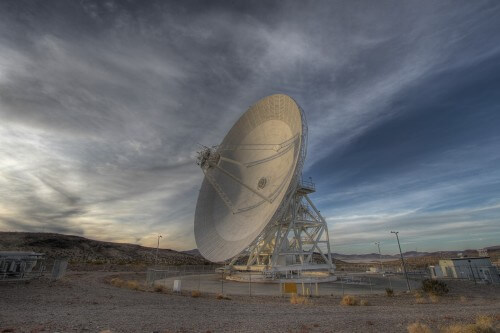Over the past several years, the Deep Space Network (DSN) antennas have contacted almost every mission that has flown to the Moon or beyond. Historical broadcasts passed through it, including the phrase "One small step for man - one giant step for humanity" and images from the surface of Mars

On December 24, 2013, NASA's Deep Space Network, the world's largest and most powerful communication system for spacecraft, will celebrate its 50th anniversary.
Over the past several years, the Deep Space Network (DSN) antennas have contacted almost every mission that has flown to the Moon or beyond. Historical broadcasts passed through her, including the phrase "A small step for a person - a giant step for humanity". All images from spacecraft that have reached the outer planets, images taken by Mars rovers, and data confirming that NASA's Voyager spacecraft has finally entered interstellar space.
Members of the network's staff like to use the phrase "don't leave the planet without us."
From the beginning of NASA's space program it was clear that a simple and direct way to communicate with missions in deep space would be needed. What's the point of sending a spacecraft to Mars if we can't get data, images and other vital information from it?
What is now known as the 'deep space network' began as the placement of several small antennas with communication facilities in space. The facility was originally operated by the United States Army in the XNUMXs and then passed to the new administration created for the space program - NASA.
On December 24, 1963, the facility officially became the Deep Space Network and soon became the de facto network for all missions planned for deep space. Three antenna complexes were set up around the world with an antenna spread every 120 degrees of longitude so that even as the Earth rotated, the spacecraft would always be above the horizon of at least one listening facility. Of the dozens of facilities, there remain three complexes that operate 24 hours a day, seven days a week, 365 days a year in Canberra in Australia, Madrid in Spain and Goldstone in California.
The space agencies of Europe, Japan and Russia have relied on the deep space network in planning and actually communicating with their missions for decades. The Deep Space Network currently serves as India's first Mars probe MOM.
"Today, the DSN supports a fleet of more than 30 US robotic spacecraft and international space missions," says Al Banji, director of the Deep Space Network at NASA's Jet Propulsion Laboratory (JPL). "Without the deep space network we would never have been able to travel to the planets Mercury and Venus, visit asteroids and comets, we would never have seen the amazing images of robots on Mars, or close-up photographs of Saturn's majestic rings."
In addition, the network allows data to be uploaded and downloaded to dozens of spacecraft. The network helps navigators locate landing points and manage the movements of spacecraft in orbit around other planets and direct their orbits. Currently, the list of spacecraft supported by the Deep Space Network includes the Curiosity rover on Mars, the Spitzer Space Telescope, the Cassini spacecraft on Saturn, and two Voyager spacecraft located 15.5 billion kilometers from Earth.
The deep space network has also aided scientific investigations in its own right. For example, the 70 meter diameter antenna at Goldstone is able to send a radar echo to near-Earth asteroids to determine their speed and position very precisely. The data helped scientists calculate the orbits of asteroids for the next hundred years and more. This is especially important for tracking asteroids that could cause damage if they hit Earth. If the asteroid is close enough, they can also use radar to take an image of the object to determine its size, shape and rotation.
Additionally, by appropriately combining signals from DSN antennas with other radio telescopes, it is possible to create a "synthetic telescope" capable of peering into the cores of active galaxies at the other end of the observable universe. Also, DSN can be used for the study of the planets in our galaxy and the study of the solar wind and the physics of gravity.
The future of the deep space network looks bright when on the horizon there is a transition to optical communication that will increase the capacity of traditional radio (RF) communication. Although radio waves also travel at the speed of light, optical communication, when it becomes an available technology, will provide a dramatic increase in the amount of data that can be obtained from scientific missions. The bandwidth that will be achieved through the use of an optical communication laser beam is much greater than the traditional radio frequencies. In fact, the Deep Space Network team predicts that the day is not so far off when, in addition to broadcasting images of wheel tracks of robotic vehicles from the dusty surface of Mars, it will be possible to broadcast online video that will leave viewers wide-eyed."
"In 2063, when we celebrate the 100th anniversary of the Deep Space Network, we can imagine that we will remember the amazing days when our antennas streamed high-resolution video data from the first manned landing on Mars, or the first day we discovered life on a planet orbiting a distant star."
Of course, no one knows if and when that day will come, but the deep space network is expected to play a significant and important role in spreading the sensational news.
JPL, now a division of the California Institute of Technology in Pasadena, manages the Deep Space Network for NASA.
For information on the NASA website
More information about the Deep Space Network
